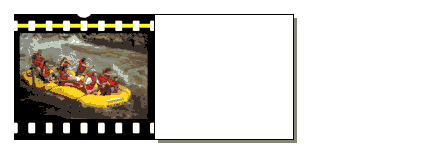
File: i_slideshow.isc
| This example shows a sequence of images that simulates a slideshow. To make your own, reuse the base slide (i_slide.gif, shown on the right) and make your thumbnails of 129x87 pixels or less. Any slide is composed of the base and an image. To add a link to an image, it is better to set it for its base slide. |  |
The key of this example is in the frame sequence explained here:
| Frame # | Duration | Hint | Screenshot of the Isaac Workspace |
| 1 | 500 ms | Put the first image outside the viewable area |  |
| 2 | 4000 ms | Move the first image into that area and set a long duration |  |
| 3 | 500 ms | Repeat the last frame with a short duration |  |
| 4 | 500 ms | Move the first image outside the viewable area and add another image |  |
| 5 | 4000 ms | Repeat the operation for the second image, leaving the first out |  |
| 6 | 500 ms | The long transition between two equal frames is needed to have the image still for 4 seconds |  |
| 7 | 500 ms | The image that was visible in the previous frames now is below the other on the right. The sequence continues with the other images... |  |